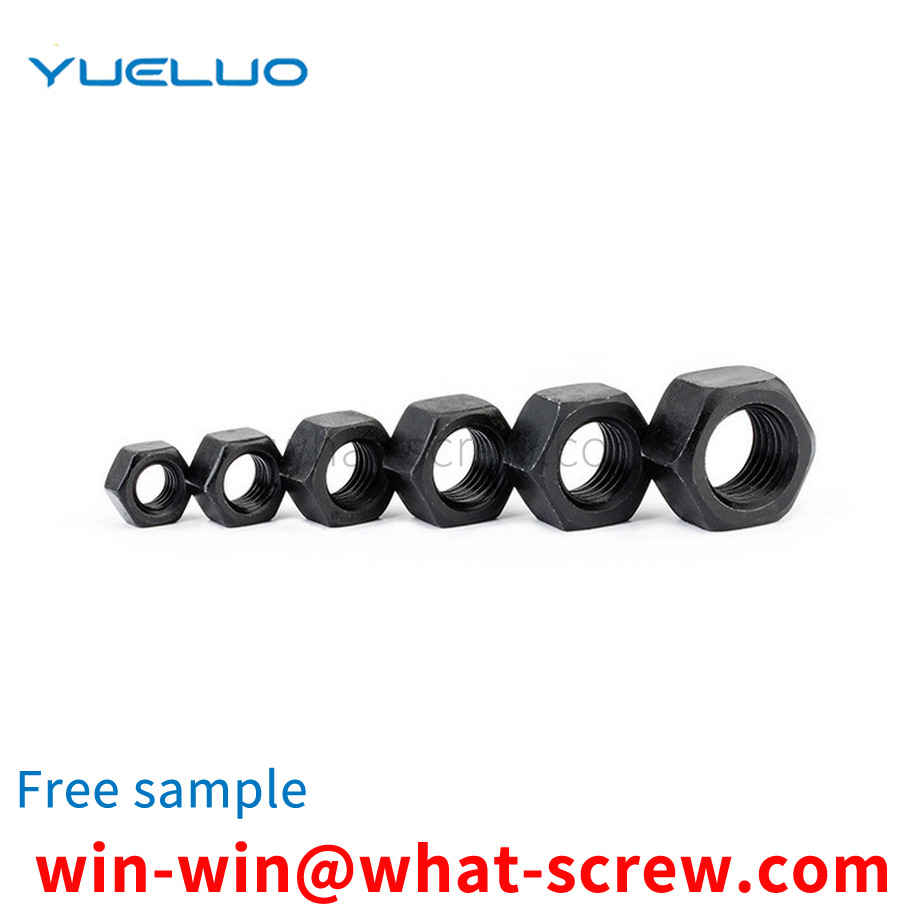Commonly used screw materials in my country are No. 45 steel, 40Cr, ammoniated steel, 38CrMOAl, superalloy, etc. 1) No. 45 steel is cheap and has good processing performance, but poor wear resistance and corrosion resistance. Heat treatment: quenched and tempered HB220-270, high-frequency quenched HRC45--48. 2) The performance of 40Cr is better than that of No. 45 steel, but it is often plated with a layer of chromium to improve its corrosion resistance and wear resistance. However, the requirements for the chrome plating layer are relatively high. If the plating layer is too thin, it is easy to wear, and if it is too thick, it is easy to peel off. After peeling off, it will accelerate the corrosion, and it has been rarely used. Heat treatment: quenched and tempered HB220—270, hard chrome plated HRC>553) nitrided steel, 38CrMoAl have excellent comprehensive properties and are widely used. Generally, the nitride layer reaches 0.4-0.6 mm. However, this material has low resistance to hydrogen chloride corrosion and is relatively expensive. 4) The superalloy material is superior to other materials. This material does not need coating, and is mainly used for the raw halogen-free screw of injection molding machine. The material has high oxidation resistance and corrosion resistance.
The purpose of this utility model is to solve the problems in the prior art, and proposes an installation structure which adopts T-bolt and groove matching, which can make the installation of the bolt more convenient, the degree of tightening is higher, the service life is longer, and the Routine replacement and maintenance.
Usually, the pumped storage unit adjusts the opening of the guide vane through the movable guide vane to control the power generation output and the pumping head of the unit. The torque of the guide vane rotation depends on the relay to act on the control ring, and the torque is transmitted to the guide vane rotating shaft through the connecting rod and the arm. The torque transmission between the crank arm and the rotating shaft all acts on the pin located between them. When the unit is overhauled, it is necessary to remove the pin between the arm and the rotating shaft of the guide vane in advance when it comes to the replacement of the guide vane. However, due to the special position of the pin and the limited inspection space, the conventional method is not only time-consuming and laborious, but also has the risk of damaging the pin. Maintenance work brings inconvenience.
(1) The screw-in performance test is to screw the self-tapping locking screw sample into the test plate until one complete thread completely passes the test without breaking. (2) The destructive torque test is to clamp the stem of the self-tapping locking screw specimen in a thread mold or other device that matches the screw thread, and uses a calibrated torque-measuring device to measure the screw. Torque is applied until fracture, which should not occur in the clamped threaded portion. (3) Carry out a tensile test on the screw sample to check the minimum tensile load for failure. The fracture should be within the length of the rod or the unthreaded thread, and should not occur at the junction of the nail head and the rod. Before the sample breaks, it should be It can reach the minimum tensile load specified by the corresponding performance class. (4) Hydrogen embrittlement is a problem that must be strictly paid attention to in the surface treatment process of self-tapping locking screws. In the pickling process, the screw is stirred in dilute hydrochloric acid, and the amount of hydrogen absorbed by the pickling steel increases linearly with the square root of time and reaches the saturation value. Less than 100%, a large number of hydrogen atoms will be produced, which will be attached to the surface of the screw, resulting in hydrogen infiltration, and the steel will become brittle due to the absorption of hydrogen. The self-tapping locking screw takes 6~8h to drive hydrogen, and the temperature is 160~200℃ (phosphating) and 200~240℃ (electroplating). However, in the production process, the hydrogen drive time should be determined according to many production conditions such as core hardness, surface roughness, electroplating time, coating thickness, pickling time, and acid concentration. It is best to do it before passivation and just after electroplating.
With the vigorous development of the construction market, fastener-type steel pipe scaffolding and formwork support have been widely used, and a large number of fasteners are used in the fastener-type steel pipe scaffolding and formwork support system. The commonly used fastener structure generally includes a fastener body 1, a blade 2, and a rivet 3 for connecting the fastener body and the blade. An arc-shaped cavity 4 for penetrating the steel pipe is provided between the fastener body and the blade. Figure 1 Right-angle fasteners shown. However, in the process of building construction, the blades of the fasteners have different degrees of cracks and fractures, which lead to the scrapping of the fasteners, or the fasteners are scrapped due to the poor anchoring of the rivets of the fasteners, resulting in a lot of waste, and the fasteners are damaged. There is a large safety construction hazard. However, repairing damaged fasteners entirely by hand has many disadvantages, such as technical difficulty, time-consuming and labor-intensive, and high operating costs. Therefore, researching and designing an auxiliary device for installing rivets in the process of repairing damaged fasteners to reduce labor intensity of workers, improve repair efficiency, and reduce operating costs is a technical problem to be solved urgently by those skilled in the art.
We have many years of experience in the production and sales of screws, nuts, flat washers, etc. The main products are: GB6178 hexagon slotted nuts, combination set screws and nuts, chrome vanadium steel heat, supporting spacer columns and other products, we can provide you with suitable products for you Fastener Solutions.



















 Service Hotline
Service Hotline




